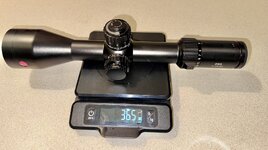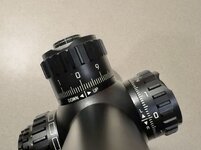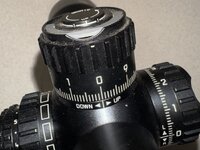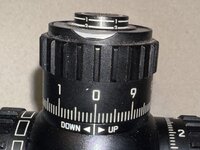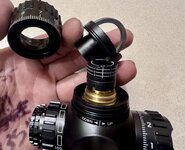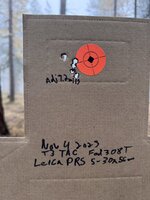Reticle:
Common .2 mil per tick mark on the main lines. It has a tree reticle in .5 mil marks below center. The reticle gets a tiny bit thicker at 10 mils from center. The center “dot” isn’t a dot, it is a small open circle. It is one of the thinnest overall reticles that I have seen.
5x

30x
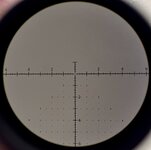
Illuminated 5x
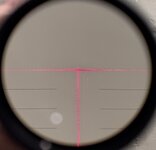
Illuminated 30x-
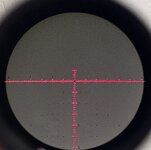
On high illumination it bleeds like most scopes do-
 Drop Evaluation RTZ and “Tracking”:
Drop Evaluation RTZ and “Tracking”:
For an explanation see-
Scope Field Eval Explanation and Standards
The “test” consists of three 18” drops on a mat- one left/right/top with a shot to check zero after each drop. Then the exact same thing repeated from 36”. Then three drops on all three sides for nine drops on the last part- 15 drops total. This is not “abuse”. The 18” drops are a joke really. The 36” start showing something. And when a scope make/model consistently goes through the whole thing without losing zero, and makes it through the high round count portion, failures in actual use are almost unheard of.
This one was conducted on soft soil, with a 1/2 rubber padded mat top.
The rings were degreased and installed with 65 in-lbs on base screws, and 25 in-lbs on ring cap screws.
Ammunition used was Federal 168gr Tru. The 20 round proof group with this ammo was 1.2 MOA.
Zeroing:
Bore sight, two shots- center high. Mad adjustment, next three in left for. Made a right .2 adjustment, next 5 on center dot- didn’t seem to move, another R.2 adjustment and 5 shots on right dot. One finale left .1 adjustment.
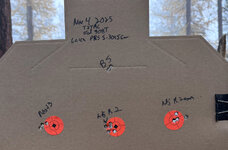 Drop evaluation:
Drop evaluation:
Shots as marked. First left 18” drop moved it off the dot. Right side 18” shifted it back. After that it shift high right and generally stayed there.
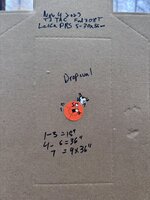
After the drop portion I went back to the zeroing target and checked. First shot was .4 mils high and right .2 mils. Made that adjustment and the next shot hit center.
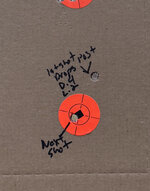 RTZ:
RTZ:
No issues.

(Adjustment right .1 after the RTZ)
Cont…
